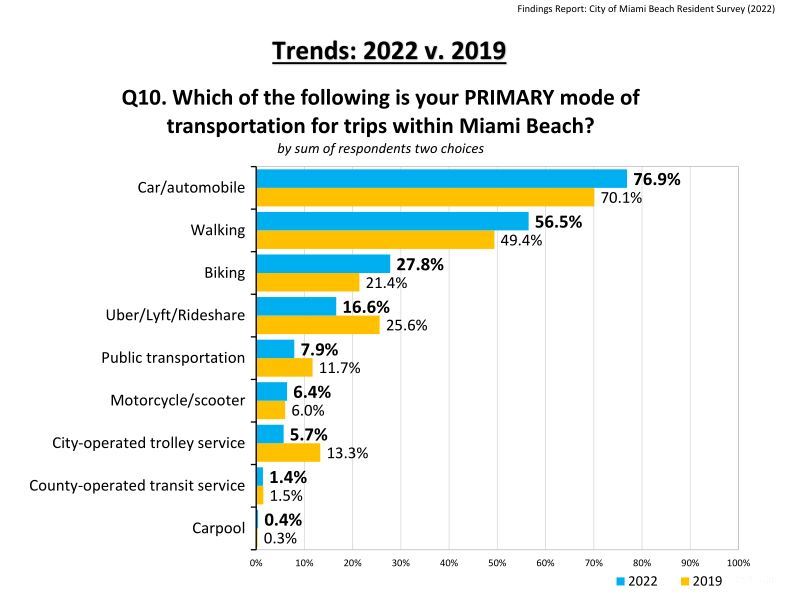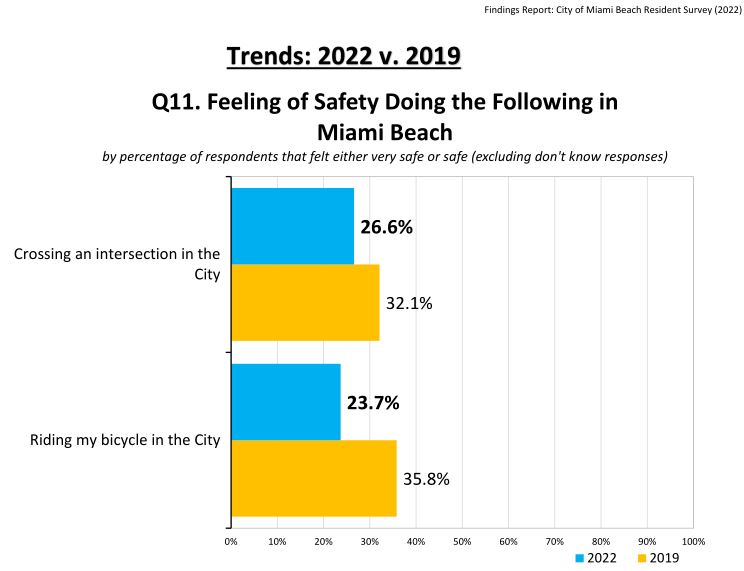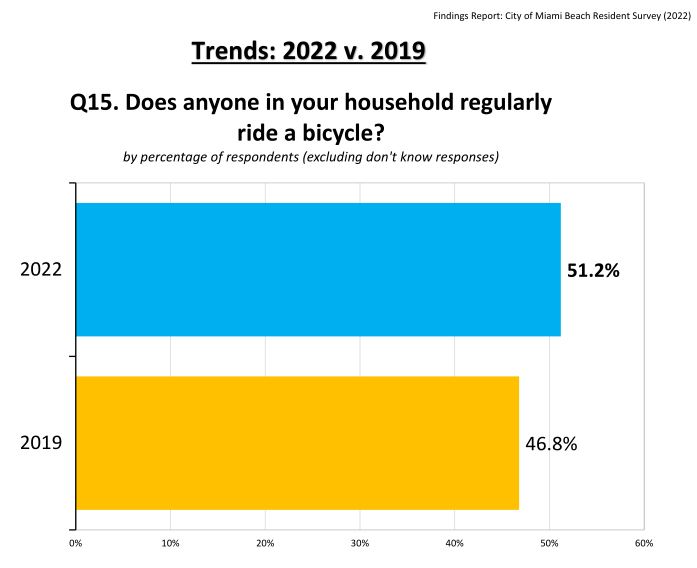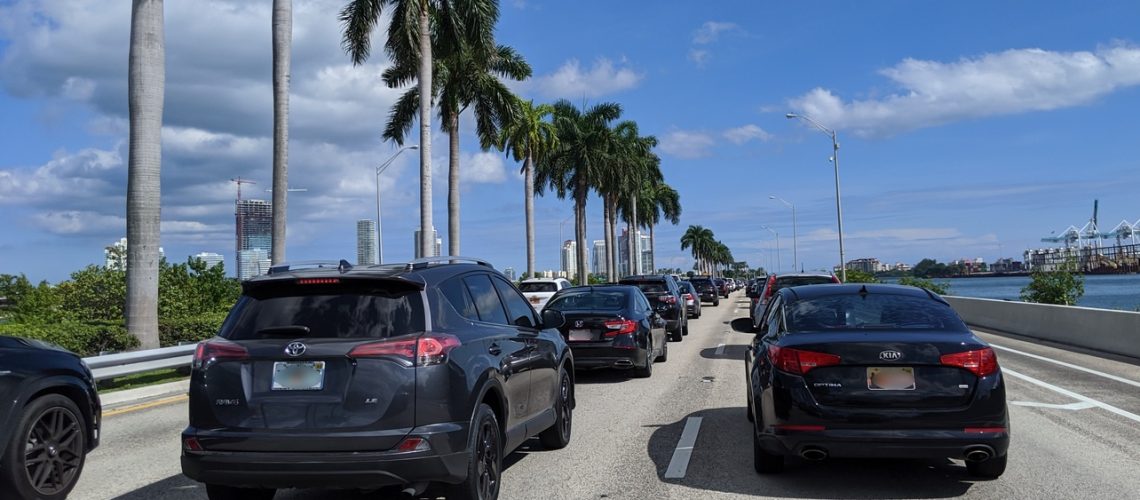By Matthew Gultanoff, Founder Better Streets Miami Beach
Chairperson, City of Miami Beach Transportation, Parking, Bicycle-Pedestrian Committee
Member, Miami-Dade County Bicycle-Pedestrian Advisory Committee
Later today, the Miami Beach Commission is set to host a workshop on “traffic management.” This event will serve as a fitting end to the Commission’s term—a period which can best be described as a step backward in terms of mobility in Miami Beach.
Despite both global and local trends favoring sustainable transportation and urban mobility, the Commission’s decisions harken back to an era dominated by automobiles. Despite evidence that an increasing number of Miami Beach residents are opting for alternative modes of transportation, the Commission’s actions have made it abundantly clear: their vision for Miami Beach is an automobile-dominated one.

The Commission seems stuck in the past, favoring cars over all else. They’ve refused to support rapid transit expansion and have let the Bicycle Master Plan implementation slow to a trickle. Even the popular, “slow streets” project, which was abruptly removed, but later was funded after public outcry, is still waiting to be put into action.
They removed the bike lanes on Washington Avenue, overlooking alternative plans which advocated for transit lanes. Parking seems to be their top priority, even causing delays in important projects like the one for the West Avenue neighborhood.
And let’s talk about traffic light synchronization, the latest buzzword among elected leaders. In a town hall back in May, the FDOT District Secretary dispelled the myth that this could be the silver bullet to the city’s congestion woes. Yet, the city and county have persisted in recalibrating signals to favor cars. This has led to pedestrians waiting extended periods just to cross the street—so long, in fact, that many now cross against signals, increasing the risks of crashes and injuries. They’ve also removed safety features like Leading Pedestrian Intervals (LPIs) in many areas. This isn’t just annoying—it’s dangerous. A recent survey underscores the concern: 73% of residents now feel unsafe crossing streets, a noticeable increase even from the already high 68% in 2019. And those feeling safe biking in the city? It’s down to 23.7% from 35.8% in 2019.

Meanwhile, the newly configured signals, many only operate in car detection mode, such as on Alton Road near the affordable senior housing at Rebeca Towers. Many elderly residents struggle to cross the street to reach the widely used trolley stop. On a bike or eScooter? Good luck. The signals do not detect those not in cars, and should you happen to get a green light, be prepared for it to change mid-way through the intersection.
We’re in the midst of conducting an audit of traffic signals to determine impacts that recent traffic signals modifications have had on pedestrian safety. Alarmingly, we’ve found over 75% of signals in South Beach have removed automatic pedestrian safety features — that have been around for years.
Even on Ocean Drive, perhaps with the highest number of pedestrians in the city, 2 of the 3 signals have had automatic pedestrian signals removed. What’s next? Lincoln Road? Or Fifth Street, where parents and children cross to reach the local elementary school — will those be next to have auto pedestrian signals removed and be optimized for car travel? At the expense of safety?

While there are ongoing discussions about new incentives for affordable housing, some commissioners still resist reducing burdensome parking requirements. This is despite clear signs that many in transit-rich (for Miami Beach), walkable, and bikeable neighborhoods desire fewer cars and more transportation options. Data, backed by professional planning staff, suggests reducing parking requirements could cut housing costs, especially with parking costing up to $50,000 per space.
But there’s hope. A new Commission election is coming in November. Many of the candidates see the value in a Miami Beach that doesn’t put cars first. It’s our chance to support leaders who really get what our city needs. – as indicated in our candidate questionnaire, which will be published soon.
In a time of unprecedented wealth and resources, which may not continue, the Commission has squandered a once in a generation opportunity to implement mobility strategies that would serve everyone — those that bike, walk, drive, and take transit. Instead, adopted police and master plans have been ignored.
There are many more examples throughout North, South and Mid-Beach of the step backward. Just a few have been provided. Our hope is that no action or direction is given today that would decrease the safety and accessibility of the most vulnerable. And with the upcoming election, we can push for a Miami Beach that’s safer, more comfortable, and accessible whether you choose to walk, bike, drive, or take transit. Let’s make it happen.
Miami Beach Commission Workshop on Traffic Management
October 30, 2023 – 3:00 PM
Miami Beach Convention Center
1901 Convention Center Drive
2nd Floor,Meeting Rooms 222-225
https://miamibeachfl-gov.zoom.us/j/81392857671
or Dial: 1.305.224.1968
Webinar ID: 813 928 576 71

